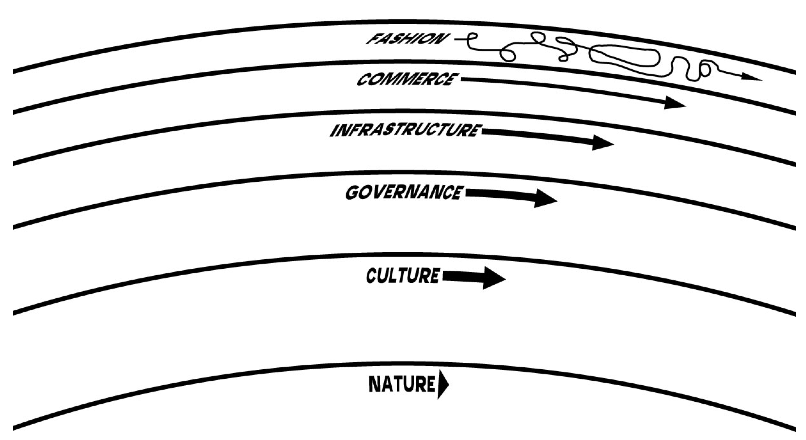The fast layers innovate, the slow layers stabilise. The fast learns, slow remembers. #systemsthinking

Sharing this simple model that I return to often for a grounding, bigger perspective. The explanatory quotes below are from here: “Pace layering: how complex systems learn and keep learning” by Stewart Brand.
The job of fashion and art is to be froth—quick, irrelevant, engaging, self-preoccupied, and cruel. Try this! No, no, try this! It is culture cut free to experiment as creatively and irresponsibly as society can bear.
If commerce is completely unfettered and unsupported by watchful governance and culture, it easily becomes crime.
Infrastructure, essential as it is, can’t be justified in strictly commercial terms… Education and science are forms of intellectual infrastructure. A high yield but delayed payback.
Culture’s vast slow-motion dance keeps century and millennium time. Slower than political and economic history, it moves at the pace of language and religion. Culture is the work of whole peoples.
If some parts of our society are going to speed up, then other parts are going to have to slow way down, just to keep balance. (And that’s a cultural call)
The world’s first empire, the Akkadian in the Tigris-Euphrates valley, lasted only a hundred years, from 2300 BCE to 2200 BCE. It was wiped out by a drought that went on for three hundred years.
When we disturb nature at its own scale, such as with our “extinction engine” and greenhouse gases, we risk triggering apocalyptic forces. Like it or not, we have to comprehend and engage the longest now of nature.
The total effect of the pace layers is that they provide a many-leveled corrective, stabilizing feedback throughout the system. It is precisely in the apparent contradictions between the pace layers that civilization finds its surest health.